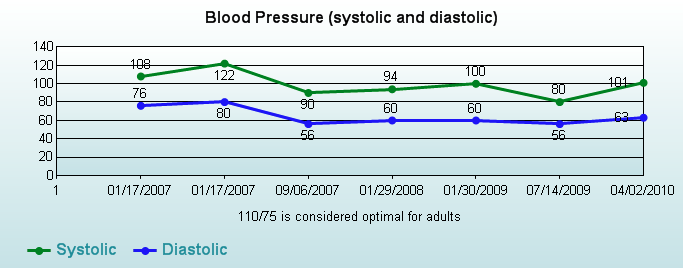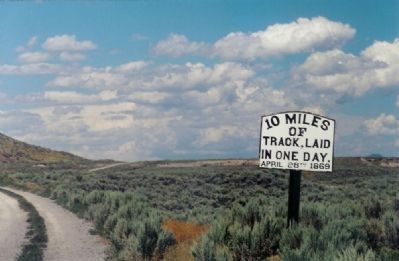Curiosity Cam questions
November 30th, 2010 at 10:39 pm (Planets, Society, Spacecraft)
On a tip from my officemate, today I checked out the live camera feed from the clean room next door where our next Mars rover, the Mars Science Laboratory (or MSL), is being tested. MSL doesn’t launch until next fall, but they’re busy putting it through its paces right now to ensure that all of the instruments work as expected. It’s in a clean room so that we can minimize the amount of terrestrial biota it picks up prior to launch. We’d hate to inadvertently inject our own life into the pristine Martian environment — especially if we then detected it and thought it could be Martian!
As I write this, at 10:30 p.m., a technician in his bunny suit is walking around the rover, tinkering with connections and still hard at work. The video is dubbed “Curiosity Cam” because it is alliterative and because MSL acquired the name “Curiosity” as the result of a naming competition (I prefer simple old MSL).
But earlier today when I tuned in, JPL was also offering a live chat to accompany the video. Two anonymous folks in our newsroom were fielding any and all questions posed by anyone who dropped in. At first glance it seemed a bit dull — but then I started reading the comments and quickly became sucked in. How can you help but want to answer the questions of the curious public? Here are some excerpts. (Note that people who connected but didn’t log in via twitter or facebook, including me, were assigned generic “ustreamer” ids.)
The most common question (which maybe you have as well) is what the flashing blue light means. I thought it was probably just a visual signal that testing was in progress… but learned from the chat that instead it means that power is flowing to the rover.
ustreamer-43285: i’ve had 2 questions answered by jpl…this is awesome.
ustreamer-61986: i want to work for NASA!!!
ustreamer-01212: me too
Giati: me 3
ustreamer-25131: me 4
ustreamer-59789: Hell yeah, just no way im as smart as these guys. Awesome]
ustreamer-75761: yep nasa beats all other space agencys by a mile
Not a kilometer?
The two JPLers officially answering questions were named NASAJPL and NASAJPL-1. I was repeatedly impressed with how they fielded all sorts of questions, with a polite and informative tone, no matter the question.
ustreamer-33518: i hope this rover doesnt get stuck do you have a system to stop that happening?
NASAJPL: 33518, the rover’s six 20-inch wheels are designed to help maneuver out of such a situation.
One individual, 59789, was really taken with speculations about the upcoming astrobiology-related press conference on Thursday. The link he/she posted certainly falls into the “speculation” genre. I couldn’t resist chiming in to help out.
ustreamer-59789: Not at all. Thursday meetng will put that to rest. Nasa revealing they found biological life on Titan
ustreamer-59789: http://current.com/technology/92832052_story-of-the-century-nasa-may-announce-thursday-to-have-found-life-on-saturns-moon-titan.htm
NASAJPL-1: There are a lot of rumors about the Thursday briefing. It will NOT be an announcment of finding extraterrestrial life.
ustreamer-69544 (Me): There is a lot more to the field of astrobiology than just finding current life — we want to know about conditions conducive to life, and all of the chemistry involved, too.
NASAJPL-1: Repeat: it will NOT announce the finding of life on Titan. It’s too bad people out there are trying to get attention by running false stories.
NASAJPL-1: 69544 That is correct!
Then the questions started getting more and more interesting:
ustreamer-75761: wish ion drives were being used it would be a whole lot faster then currnent tech
ustreamer-69544 (Me): 75761, ion drives accelerate much more slowly than chemical rockets. They are good for very long trips but not for trips to Mars.
ustreamer-49140: 69544 … I understand that. But it’s still bewildering, with all our tech we have to send a FLEET of probs to mars to find out if theres life there. Surely it can be done with a single probe ?
ustreamer-69544 (Me): 49140, no one knows how to search the whole planet with a single spacecraft. But we learn more from each one sent!
ustreamer-49140: 69544. I agree, but we shouldent have to travel ALL over mars in an effort to find life. Just as someone sending a probe to earth would find life no matter where the probe landed.
ustreamer-69544 (Me): 49140, if life were as prevalent on Mars as it is on the Earth, you’re right, we would already have found it!
… and even relevant to geology!
ustreamer-02837: is it believed the lanscape on mars was created by water?
ustreamer-69544 (Me): 02837, the Martian surface has been shaped by ancient water, and aeons of wind, and episodes of volcanism.ustreamer-77218: Earth is much bigger than Mars, but about 70 % of the Earthen surface is covered by water. On Mars there is 0 % covered. How much land compared to earth is it on Mars?
ustreamer-69544 (Me): 77218, great question! In fact the land surface on Mars is quite close to the land (non-ocean) area of the Earth.
ustreamer-77218: Thank’s “US-69544”. =) And Moon? about half of Mars?
ustreamer-69544 (Me): 77218, it looks like the Moon’s surface area is about 1/5 that of Mars.
(Actually, my quick math was a bit off — it’s between 1/4 and 1/5 that of Mars.)
After a while I started to wonder if NASAJPL and NASAJPL-1 would realize that I too was at JPL… and then I decided to get back to some real work. But wouldn’t it be fun to be the JPL expert fielding these questions?

 I’m used to giving tours to friends and visitors at work, but it’s not often that *I* get to take a tour of a friend’s workplace. Last Friday, I was treated to a behind-the-scenes view of a Kaiser pharmacy (thanks, Jim!).
I’m used to giving tours to friends and visitors at work, but it’s not often that *I* get to take a tour of a friend’s workplace. Last Friday, I was treated to a behind-the-scenes view of a Kaiser pharmacy (thanks, Jim!). 

